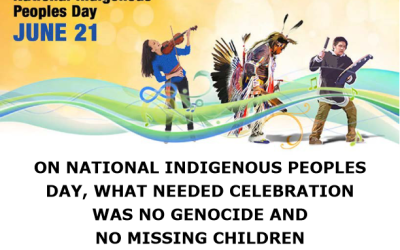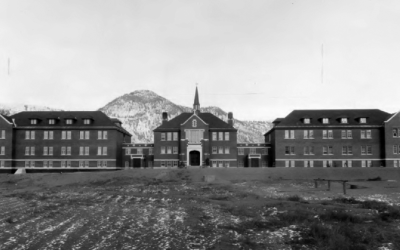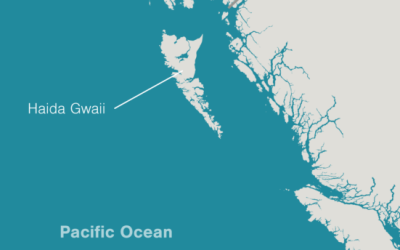WINNIPEG/LETHBRIDGE – The Frontier Centre for Public Policy today released the its first Canadian Property Rights Index (CPRI).
The CPRI was inspired in part by the International Property Index (IPRI). The Frontier Centre partners with the Washington, D.C.-based Property Rights Alliance, which produces the annual IPRI. Although the IPRI measures Canada’s property rights protections, it does so at a national level. The CPRI, however, measures property rights protections at the provincial and territorial levels. It is by far the most detailed analysis of property rights protections at this level of jurisdiction.
The aim of the index is to determine how each of the 13 jurisdictions across Canada respond to some of the most significant threats to property rights across Canada today. We arrived at a select number of categories to include in our evaluations based on extensive research and in conversations with legal experts across Canada.
“Over the years, Canadians have become increasingly conscious of how precarious their property rights are,” said Joseph Quesnel, a Frontier Centre policy analyst and index lead researcher.
The international data shows that secure property rights are integral to a flourishing economy, said Quesnel. Property rights also provide essential individual protections for average Canadians in their daily lives.
“It is hoped this index will shine the spotlight on property rights where most threatened. Then, ideally, Canadians can mobilize in their own jurisdictions to protect them from local governments bent on over-regulation and control.”
The CPRI measures property rights protections across eight indicators.
These eight indicators are:
- Registering/Transferring property– Provinces and territories have different ways to register land title. This indicator recognizes whether the jurisdiction follows the superior Torrens system or the deeds system. It also determines whether the jurisdiction has an onerous land transfer tax.
- Expropriation (procedural safeguards and grounds for expropriation)- When governments involuntarily transfer title from private landowner to itself, there are procedural safeguards that protect landowners. However, not all jurisdictions have similar safeguards. This indicator measures the presence of 11 safeguards. It also evaluates whether the powers of expropriation are broad and sweeping or narrow.
- Land use planning (or ‘down zoning’)/ Constructive takings– Land use planning interferes with property as it restricts its uses. This often leads to land value reductions. This indicator identifies whether a jurisdiction has a right to compensation in case of reduction. Constructive takings refer to the ability of government to regulate land use to the point where its value or uses is close to an actual expropriation. Different jurisdictions in Canada have different ways to deal with constructive takings and this indicator recognizes those ways.
- Municipal Power of Entry– Provincial and territorial laws provide municipalities with the power allowing officials to enter and inspect properties to enforce municipal bylaws. There are important safeguards, however, designed to protect landowners. This indicator identifies whether a jurisdiction has these safeguards.
- Civil Forfeiture– Governments have the ability through the courts to seek title to property that has been used in, or is a gain from, unlawful activity. Civil forfeiture does not require criminal conviction and has a lower burden of proof than criminal cases. However, jurisdictions have different safeguards to protect property owners from abuse. This indicator identifies these safeguards.
- Endangered Species- The government may designate land that contains endangered species (wildlife, fish or plant). These designations affect the uses to which that land can be put and reduces value. However, jurisdictions have different safeguards to respect landowners facing such designation. This indicator identifies those safeguards.
- Heritage Property– Governments may designate property deemed to be of important cultural and heritage significance to the community. This indicator measures what procedural safeguards exist to protect property owners facing this designation.
- Wills/Succession– The ability to pass property on to the next generation is an important exercise of property rights. Thus, the ability to will property without government interference is an important measure of property rights. This indicator measures the ability of property owners to pass a legal will with as little interference as possible.
The top five ranking jurisdictions are:
Nova Scotia (68%)
Nunavut (67%)
Alberta (66%)
British Columbia (65%)
Manitoba/Saskatchewan (60.5%)
The bottom five ranking jurisdictions are:
Quebec (54.6%)
Yukon (54%)
Newfoundland (52.5%)
Northwest Territories (52%)
Prince Edward Island (47%)
The report discusses whether there are any discernible patterns within the rankings and what those patterns reveal about how different jurisdictions respond to property rights threats. It concludes with some overarching recommendations, as well as recommendations specific to each indicator, in order better to enhance property rights protections across Canada.
Note on Methodology
Each jurisdiction has indicators (ex. expropriation, heritage property, etc.) that consist of sub-components that measure particular dimension of property rights. Jurisdictions receive a specific score depending on the presence or absence of procedural features that protects property rights. Those components receive a score that allow one to determine what total score of that indicator.
That number in turn is converted into a percentage. That percentage is the score for that jurisdiction in that particular indicator. All of the indicator percentages are then aggregated before being divided by eight to yield a final score. That score is the jurisdiction’s overall score and makes it possible to rank the jurisdiction. Each numerical score that a jurisdiction receives in a given indicator is then converted into a percentage that becomes the jurisdiction’s final score for that indicator. All of the indicators are added together and divided by eight*, which is the number of total indicators, to yield a final percentage score, which allows for a ranking of the jurisdictions.
* Some jurisdictions are divided by seven as they lack civil forfeiture laws. Therefore, they are excluded from the civil forfeiture indicator
All indicators are weighted equally. This is not to be taken as a statement about the relative importance of one indicator or another. All indicators represent important dimensions to property rights in Canada today, as well other national jurisdictions.
It is not possible exhaustively to measure every aspect of property rights. So, how each jurisdiction fits within the index is not the absolute word on how that jurisdiction treats property rights in all areas. The index does not measure intellectual property, taxation, access to natural resources, landlord-tenant law, or other areas where property rights may be threatened.
For the survey analysis and the full list of jurisdictional ranking, the Frontier Centre's Assessing the State of Property Rights Protections in Canada: The First Annual Canadian Property Rights Index can be downloaded HERE.
For more information and to arrange an interview with the study's authors, media (only) should contact:
Marco Navarro-Genie
Research Director
marco.navarro-genie@fcpp.org
(403) 995-9916 (Land)


